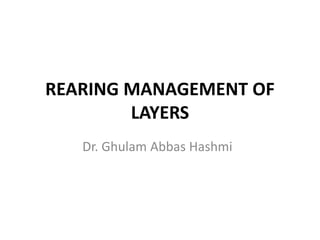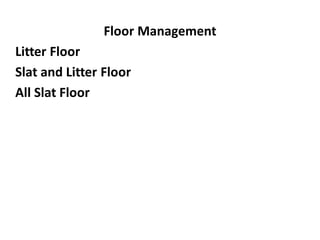This document provides information on the rearing management of layers from 8-20 weeks of age until 72 weeks of age. It discusses housing, feeding, lighting, ventilation, and health management practices during rearing and laying periods. The goal is to reach 1500g body weight by 20 weeks and peak production of 300 eggs per hen from 28-29 weeks until 40-50 weeks of age when production starts to decline. Culling of non-productive hens is recommended on a weekly basis.

























































